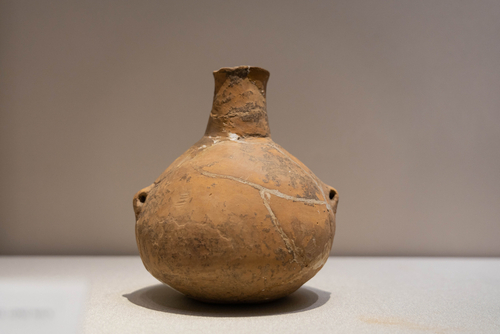The Neolithic Age, often referred to as the “New Stone Age,” was a pivotal period in human history that witnessed profound changes in the way people lived and interacted with their environment.
Spanning from around 10,000 BCE to 2,000 BCE, this era marked a transition from nomadic, hunter-gatherer lifestyles to settled agriculture and the establishment of permanent communities.
During the Neolithic Age, significant advancements in technology, social organization, and culture laid the groundwork for the development of complex civilizations in the millennia that followed.
In this context, we will explore some key facts about the Neolithic Age, shedding light on its transformative impact on human society and our journey toward modern civilization.
Neolithic Age Facts
1. Time Period: 10,000 BCE to 2,000 BCE
The Neolithic Age, or New Stone Age, represents a crucial period in human history. It followed the Paleolithic (Old Stone Age) and is characterized by significant advancements in technology, lifestyle, and societal organization.
Also Read: Facts About the Mesolithic Age
The exact dates of the Neolithic period vary from region to region, but it generally began around 10,000 BCE and ended around 2,000 BCE.

2. Emergence of Agriculture
Perhaps the most defining feature of the Neolithic Age was the development of agriculture. Instead of relying solely on hunting and gathering for sustenance, people began cultivating crops and domesticating animals.
Also Read: Timeline of the Neolithic Age
This transition is often referred to as the “Neolithic Revolution” because it fundamentally changed the way societies obtained food. Key crops included wheat, barley, rice, and maize, while animals like cattle, sheep, goats, and pigs were domesticated.
This shift from nomadic foraging to settled farming laid the foundation for surplus food production, population growth, and the eventual rise of civilizations.
3. Transition to a Sedentary Lifestyle
The advent of agriculture led to a profound shift from a nomadic, hunter-gatherer lifestyle to a settled, agrarian one. Neolithic communities began to establish permanent settlements, which included houses built from materials like mud bricks or wood.
This shift had significant implications for social organization, as people now had to work together to tend to their crops and animals, and these settled communities often formed the basis for early villages and towns.
The transition to a sedentary lifestyle also allowed for the accumulation of possessions and the development of more complex social structures and technologies.
4. Invention of Pottery
Pottery was a significant technological advancement during the Neolithic Age. People began to create clay vessels for various purposes.
Pottery served as containers for storing food, water, and other goods. It had several advantages over earlier containers made from organic materials like gourds or baskets.
Pottery was durable, heat-resistant, and less susceptible to decay. This innovation had a profound impact on daily life, allowing for better food preservation, storage, and cooking. It also enabled the transportation of liquids and dry goods more efficiently.

5. Advanced Stone Tools
While the Neolithic Age is characterized by the shift to agriculture and the use of new materials like pottery, stone tools remained essential to daily life.
However, these tools became more advanced and specialized. Neolithic people began to create polished stone tools, which were sharper and more effective than their rough-hewn predecessors. Some common tools included polished axes, hoes, sickles, and knives.
These tools were crucial for farming, woodworking, and various other tasks. The development of specialized tools reflected the growing complexity of Neolithic societies and their ability to adapt to their changing needs.
6. Social Complexity
The transition to agriculture and settled living brought about increased social complexity. Neolithic communities often developed hierarchies and divisions of labor.
As populations grew and people became more specialized in their skills and occupations, social roles diversified. Some individuals focused on farming, others on crafting tools or making pottery, and still others on religious or leadership roles.
This specialization led to greater interdependence within communities and the development of social structures, including leadership positions or early forms of governance. It also laid the groundwork for the emergence of more complex societies in the future.

7. Domestication of Animals
Alongside the cultivation of crops, the Neolithic Age witnessed the domestication of various animal species.
This was a crucial development because it provided a stable source of food, labor, and materials for clothing and shelter. Some of the animals that were domesticated during this period include:
- Cattle: Used for their milk, meat, and as beasts of burden for plowing fields.
- Sheep and Goats: Valued for their milk, wool, and meat.
- Pigs: Raised for their meat and scavenging abilities.
- Dogs: Initially domesticated for hunting and protection but later became loyal companions.
The domestication of these animals allowed for a more reliable and consistent food supply, contributing to the growth of Neolithic communities.
8. Permanent Settlements
Neolithic people built permanent settlements near fertile land suitable for agriculture. These settlements often evolved into small towns or villages over time.
They were strategically located near water sources for irrigation and drinking and had houses constructed from materials like mud bricks, wood, or stone. The establishment of permanent settlements fostered community stability and allowed for long-term planning and organization.
9. Art and Religion
The Neolithic Age saw the emergence of artistic expression and religious practices. People created various forms of art, including intricately designed pottery, figurines, and sculptures. These artistic endeavors often had spiritual or religious significance.
Additionally, the construction of megalithic structures like Stonehenge in England points to the importance of astronomy or religious rituals in Neolithic societies. Art and religion played vital roles in cultural identity and may have contributed to the cohesion of early communities.
10. Technological Advancements
Neolithic societies made several technological advances beyond agriculture and pottery. Some of these innovations included:
- Textiles: The development of woven textiles allowed for the production of clothing and other fabric-based items. This innovation improved comfort and protection from the elements.
- More Efficient Farming Techniques: As farming became the primary means of subsistence, Neolithic people refined their agricultural methods. They developed better plowing and irrigation techniques, leading to increased crop yields.
- Trade: With the growth of settled communities, trade networks began to emerge. Neolithic people exchanged goods and resources, contributing to cultural exchange and economic development.
- Calendar Systems: The study of astronomy and celestial cycles likely led to the creation of early calendar systems, helping communities track the seasons for agricultural purposes.
